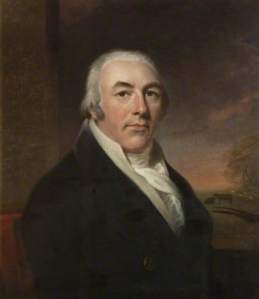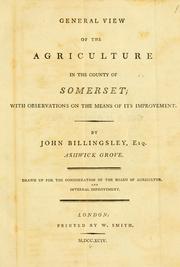
John Billingsley, born at Ashwick Grove, Oakhill, at the edge of Harridge Woods in 1747, was a very notable figure in Somerset.
To quote ‘local historian Robin Atthill from his book, Old Mendip.
“The familiar landscape of the main Mendip plateau with its wide straight roads, grass-bound and grey-walled, its scattered farmhouses each with a sheltering windbreak of trees is a landscape that Billingsley did much to create’”
John Billingsley was a man of knowledge, wealth and status who pioneered progress, improvement and innovation in agriculture, industry and transport in the18th & 19th centuries; born into a wealthy family, he was the grandson of Nicholas Billingsley, a Presbyterian dissenter who was minister at Ashwick from 1699 to 1729. He was described as a leading member of the Presbyterian church although at some stage he was reconciled with the Church of England.
Billingsley is best known as the author of “General View of the Agriculture of the County of Somerset with Observations on the Means of its Improvements” 1795. In his book and activities he advocated the modernisation of farming practices. He promoted mechanisation, ploughing with oxen, hedge and wall building, crop rotation, treatment of sick animals with medicine and the improvement of cucumber production with horse dung. His major innovation was the introduction and adoption of the double-furrow plough. The competition to demonstrate its effectiveness was held at Barrack Farm, Bath.

The chapter on political economy shows how forward thinking he was. It relates to the narrow margin of British food supplies in view of the outbreak of war with France. Today the concept is known as “Food Security”.
One of his activities was controversial. The enclosure of Mendip in order to improve farming productivity was hated by the ordinary people who were dispossessed of land by the enclosures. By contrast, his activities in the draining of Sedgemoor were beneficial without controversy.
He was a renowned agricultural expert and founder member of the Bath & West Society, now known as the Royal Bath & West of England Society, based near Shepton Mallet, Somerset. The silver cups which he won in the Society’s competitions are still in the possession of his descendants, some of whom live and work in the Bath area.
He was an important promoter and shareholder of the Somersetshire Coal Canal, the Kennet & Avon Canal and the Dorset & Somerset Canal. He also promoted the proposed Bristol & Western Canal project for linking Bristol with Taunton and was actively involved in the turnpiking of roads. His shareholding in the Dorset & Somerset Canal amounted to £3,500, but the value of his shareholdings in the S.C.C. and the K&A Canal is not known.
Billingsley had many business interests in addition to canals, including coal mines, Oakhill Brewery and its public houses and farming of 4,000 acres. Possibly he had involvement in the cloth trade and a logwood mill (making dyes for the cloth industry). He owned two mills in the Nettlebridge Valley near his home.
In the fields next to Keeper’s Cottage, Harridge Woods, he created a flooded water meadow system, quite unusual for the altitude in the Mendips, being some 500ft above sea level. This was an endeavour to encourage the grass to grow faster and so be advantageous for fattening animals for market sooner than his rivals. The leat carrying water into underground culverts under the field can still be seen today, next to Keeper’s Cottage.
In 1798 – Billingsley and Davis produced a report: “Somerset County Agricultural Report” which included a map of the Soils around Bath. This is reputed to be the map which inspired William Smith (Strata Smith – Father of English Geology), to publish his first coloured map of geological distribution around Bath, 1799. This was a circular map of a 5 mile radius around Bath, produced by Taylor & Meyler, and detailed the Oolite, Lias and Triassic “red ground” geological distribution. This then led to his much later published Geological Map of Britain “A delineation on the Strata of England and Wales 1815.
Key Facts about John Billingsley:
- Born: Ashwick Grove, Oakhill, near Shepton Mallet, Somerset 1747
- Married: Mary Wells, daughter of Nathaniel Wells, Rector of East Allington, Devon.
- Died: 26th September 1811, aged 64 at Ashwick Grove, Oakhill, Somerset.
- Buried: St James Churchyard, Ashwick, Oakhill, Somerset. Monument inside church.
- Family: One daughter Marianne Seymour
More info: